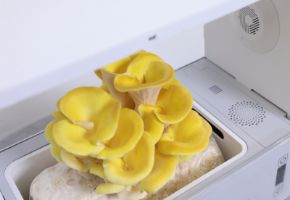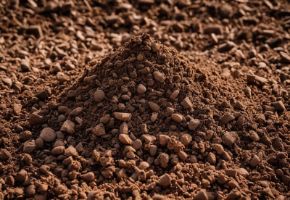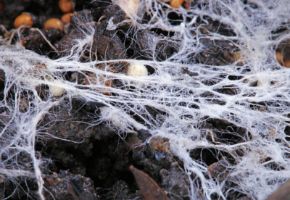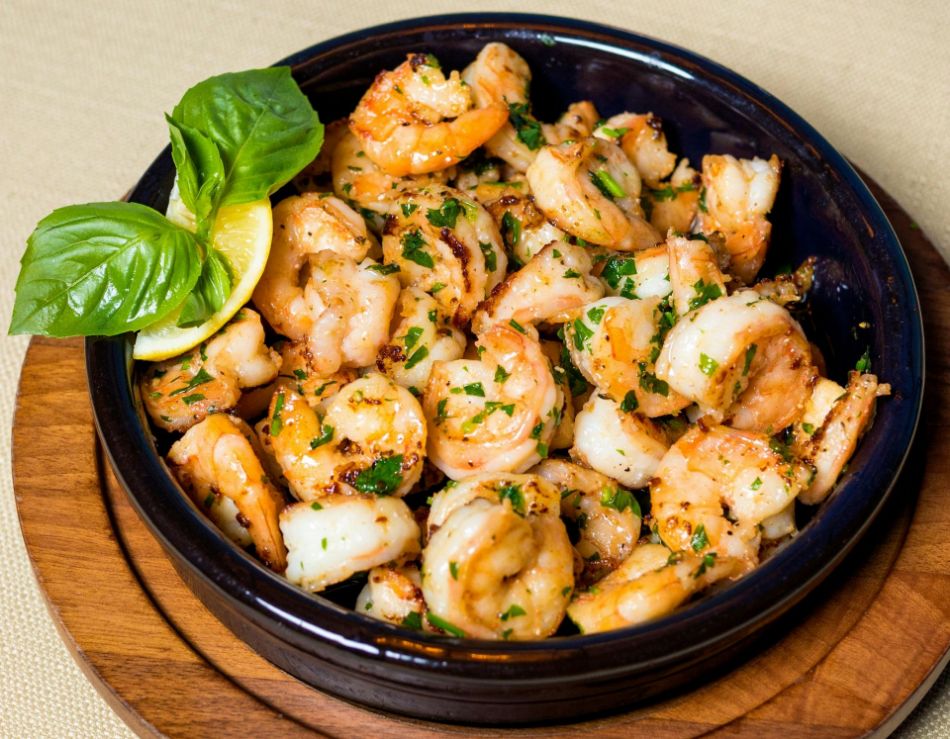When the days grow long and sultry, and the summer sun invites light yet characterful dinners, the pairing of langoustines and mushrooms emerges as a symphony of flavors that conquers even the most discerning palates. This dish, seemingly simple in its presentation, actually hides an extraordinary aromatic complexity, born from the biodiversity of the fungal kingdom and preparation techniques rooted in Mediterranean culinary tradition. Mushrooms, with their umami richness and earthy notes, perfectly complement the marine sweetness of langoustines, creating a balance that tells the story of two seemingly distant yet surprisingly kindred worlds.
In this deep dive, we’ll explore not just the recipe itself but also delve into the ecological role of mushrooms, the true architects of terrestrial ecosystems. We’ll uncover surprising facts, like the existence of aquatic fungal species that interact with the marine environment, and learn the secrets to selecting ingredients with the expert eye of a Michelin-starred chef. Through scientific data and practical tips, we’ll transform a simple preparation into a refined and mindful gastronomic experience.
The science of pairing: why langoustines and mushrooms work
Before donning the apron and diving into the stove, it’s essential to understand the sensory alchemy that makes this pairing so special. Recent molecular gastronomy studies have revealed that the volatile compounds in mushrooms—particularly 1-octen-3-ol, responsible for that characteristic "fungal" aroma—interact with taste receptors in perfect synergy with the free amino acids in langoustines, especially glutamic acid, which defines their umami flavor. This chemical complementarity creates a synergistic effect known as "flavor enhancement," where the sum of flavors surpasses the individual components.
The chemistry of flavor
A pioneering study published in the Journal of Food Science mapped over 150 aromatic compounds in the main species of edible mushrooms, many of which are enhanced through specific cooking techniques. Temperature plays a crucial role: while 1-octen-3-ol develops at just 60°C, more complex compounds like methional (responsible for notes of boiled potato and porcini mushroom) require at least 110°C to be released:
| Compound | Concentration (μg/kg) | Perception Threshold |
|---|---|---|
| 1-octen-3-ol | 1200-1800 | 1 μg/kg |
| Methional | 450-600 | 0.5 μg/kg |
Recommended mushrooms for this recipe
- Porcini (Boletus edulis): the king of mushrooms, with its earthy, intense flavor and firm flesh that withstands prolonged cooking, perfect for contrasting with the delicacy of langoustines.
- Chanterelles (Cantharellus cibarius): their slight acidity and fruity notes (reminiscent of apricots) lighten the dish and add complexity.
- Pioppini (Cyclocybe aegerita): their crunchy texture and fresh almond-like flavor offer a pleasant textural surprise.
Ingredient selection: from theory to practice
The quality of the final result largely depends on careful ingredient selection. Not all langoustines and mushrooms are equal, and learning to recognize the best is an art combining scientific knowledge and sensory sensitivity. Here’s a detailed guide for navigating purchases or foraging.
Langoustine buying guide
According to the latest FAO data, most langoustines on the market today come from sustainable aquaculture, with traceability guaranteed from sea to table. Here’s how to identify the freshest specimens:
- Color: The shell should have vibrant bluish or purplish hues (a sign of freshness), not dull or yellowish.
- Smell: Should evoke clean ocean air, with a natural sweetness—never ammonia-like or rotten.
- Texture: The flesh should be firm and elastic; light finger pressure shouldn’t leave permanent indentations.
Mushroom foraging and identification
For wild foraging enthusiasts, caution is essential. Beyond classic field guides, digital tools like MycoKey offer an updated database of over 5,000 European species, with high-resolution photos and microscopic descriptions. Key rules:
- Only collect specimens in perfect condition.
- Don’t mix different species in the same container.
- Always document the foraging location (some mushrooms absorb heavy metals from the soil).
Safe foraging statistics
A 2024 epidemiological study in the Journal of Clinical Toxicology reveals concerning data:
- Over 92% of poisonings result from misidentification, often due to superficial similarities between species.
- The most frequent case involves confusing Amanita muscaria (poisonous, with its iconic red cap and white spots) with Amanita caesarea (the prized edible Caesar’s mushroom).
- 65% of incidents involve occasional foragers without proper training.
The step-by-step recipe: techniques and secrets
Here’s the heart of the article: the detailed preparation that will transform carefully selected ingredients into a Michelin-worthy dish. We present both the classic version and creative variations to highlight different mushroom characteristics.
Ingredients for 4 Servings
- 400g of ultra-fresh langoustines (about 12-15 medium specimens)
- 300g of mushrooms (combine varieties for complexity)
- 2 cloves of Voghiera DOP garlic (sweeter and more digestible)
- Fresh parsley (30g, only the tenderest leaves)
- EVOO (80ml, preferably a medium-fruity blend)
- Verdicchio white wine (100ml, the same to be served at the table)
Method
- Cleaning langoustines: use a bamboo skewer to gently score the back and remove the intestinal tract (the "black vein"), a crucial step to avoid bitter aftertastes. Reserve the heads for possible fumets.
- Preparing mushrooms: for porcini, use a soft-bristle brush to remove dirt (washing in water compromises texture). Slice into 3mm-thick strips along the grain for even cooking.
- Soffritto: in a non-stick pan, gently sweat finely chopped garlic in oil at 65°C (use a kitchen thermometer), a critical temperature to extract aromas without bitterness. Add mushrooms and increase to 110°C for 4 minutes.
Mushroom juice spherification: the molecular technique
For an avant-garde presentation, try spherifying mushroom juice—a technique that encapsulates aromatic essence in pearls that burst in the mouth. Here’s how:
- Extract 200ml of juice from fresh porcini (centrifuge or cold-press).
- Add 0.5g of sodium alginate and blend with an immersion mixer.
- Prepare a bath of water and 2g of calcium chloride.
- Using a syringe, drop the juice mixture into the bath, forming 3-4mm pearls.
- Drain after 60 seconds and rinse in cold water.
Arrange 4-5 pearls on each plate as a final garnish, creating an experience of concentrated flavors reminiscent of autumnal forests. For further reading, consult the Modernist Cuisine manual.
Pairings and storage
Complete the experience with tips on elevating the dish through smart pairings and storage techniques that preserve its qualities.
Recommended wines
Sensory analysis by the University of Bordeaux in collaboration with Wine Spectator tested over 50 labels to find the best synergies:
| Mushroom Type | Wine | Scientific Rationale |
|---|---|---|
| Porcini | Barolo 2016 | Structured tannins bind to the mushrooms’ phenolic compounds, while licorice and tobacco notes complement the profile. |
| Chanterelles | Alsace Riesling | Vibrant acidity contrasts the langoustines’ sweetness, while mineral notes harmonize with the mushrooms’ fruity tones. |
Leftover storage
A Journal of Food Preservation study tested various storage methods for crustacean and mushroom dishes, with significant results:
- Refrigeration: Up to 24 hours at 4°C, preferably in separate airtight containers for mushrooms and langoustines.
- Vacuum Sealing: Up to 72 hours without significant quality loss, provided food is rapidly cooled before packing.
- Freezing: Not recommended for langoustines (lose texture), but possible for cooked mushrooms (up to 1 month at -18°C).
Langoustines and mushrooms: a match made in culinary heaven
The union of langoustines and mushrooms proves to be much more than a simple culinary pairing: it’s a sensory journey uniting land and sea, tradition and innovation. Whether you choose the classic version or dare to experiment with modern techniques like spherification, the key lies in respecting ingredient quality and the science behind their flavors.
This recipe, in its apparent simplicity, encapsulates centuries of mycological knowledge and gastronomic practice, proving how cooking can simultaneously be art, science, and poetry. Bon appétit and happy culinary exploration!
The fungal kingdom is a universe in continuous evolution, with new scientific discoveries emerging every year about their extraordinary benefits for gut health and overall well-being. From now on, when you see a mushroom, you will no longer think only of its taste or appearance, but of all the therapeutic potential it holds in its fibers and bioactive compounds. ✉️ Stay connected - Subscribe to our newsletter to receive the latest studies on: Nature offers us extraordinary tools to take care of our health. Fungi, with their unique balance between nutrition and medicine, represent a fascinating frontier we are only beginning to explore. Continue to follow us to discover how these extraordinary organisms can transform your approach to well-being.Continue your journey into the world of fungi










